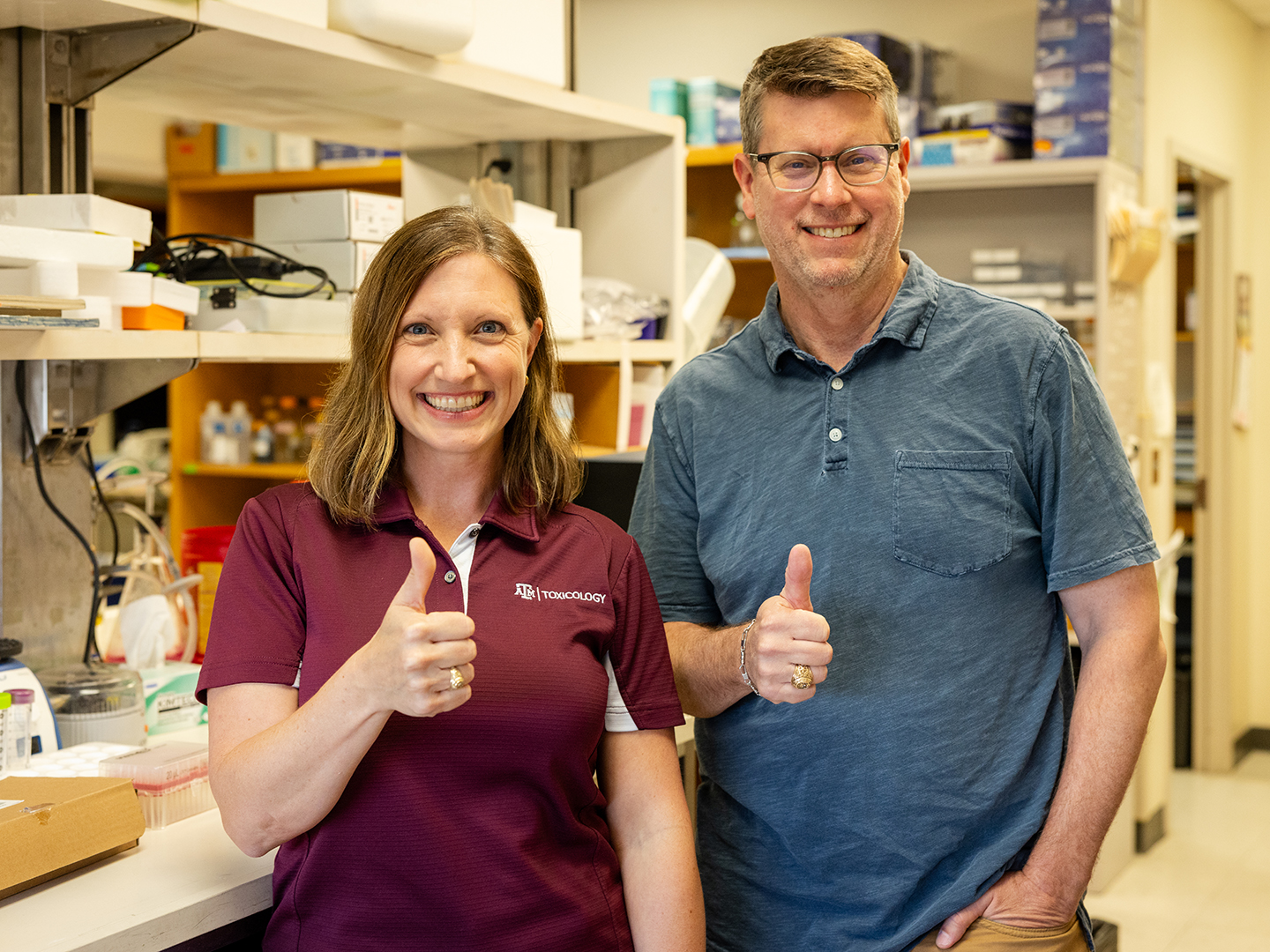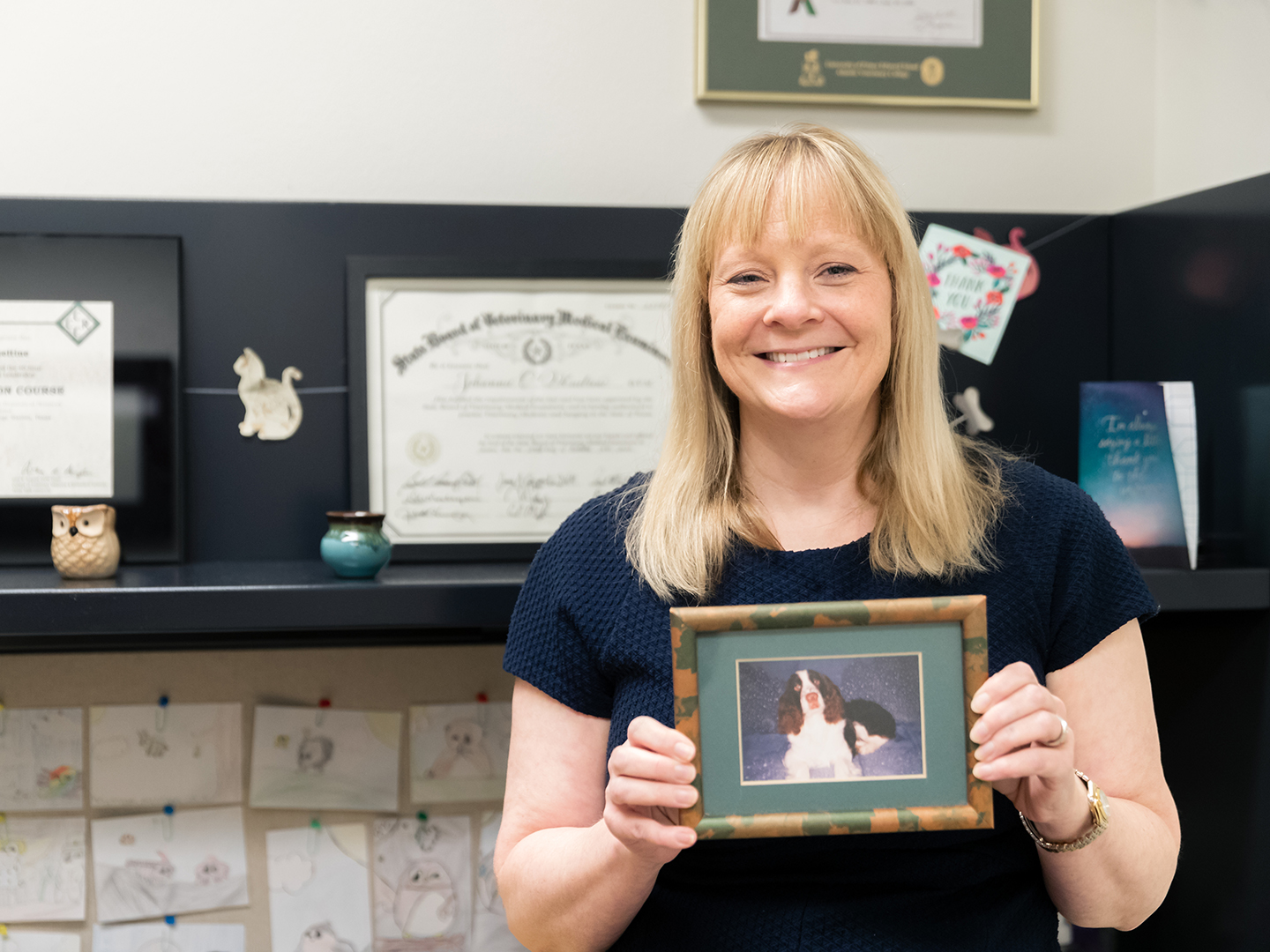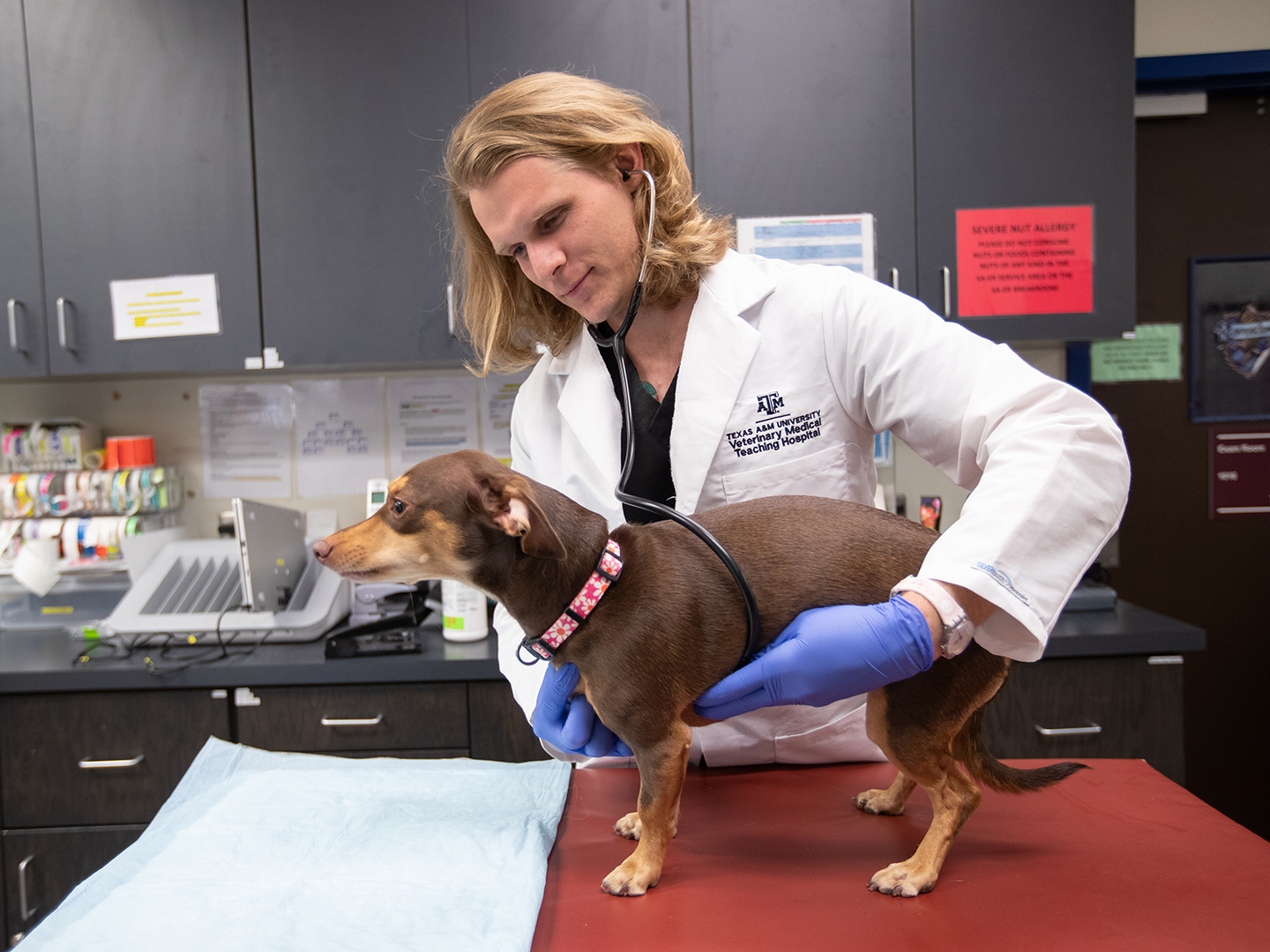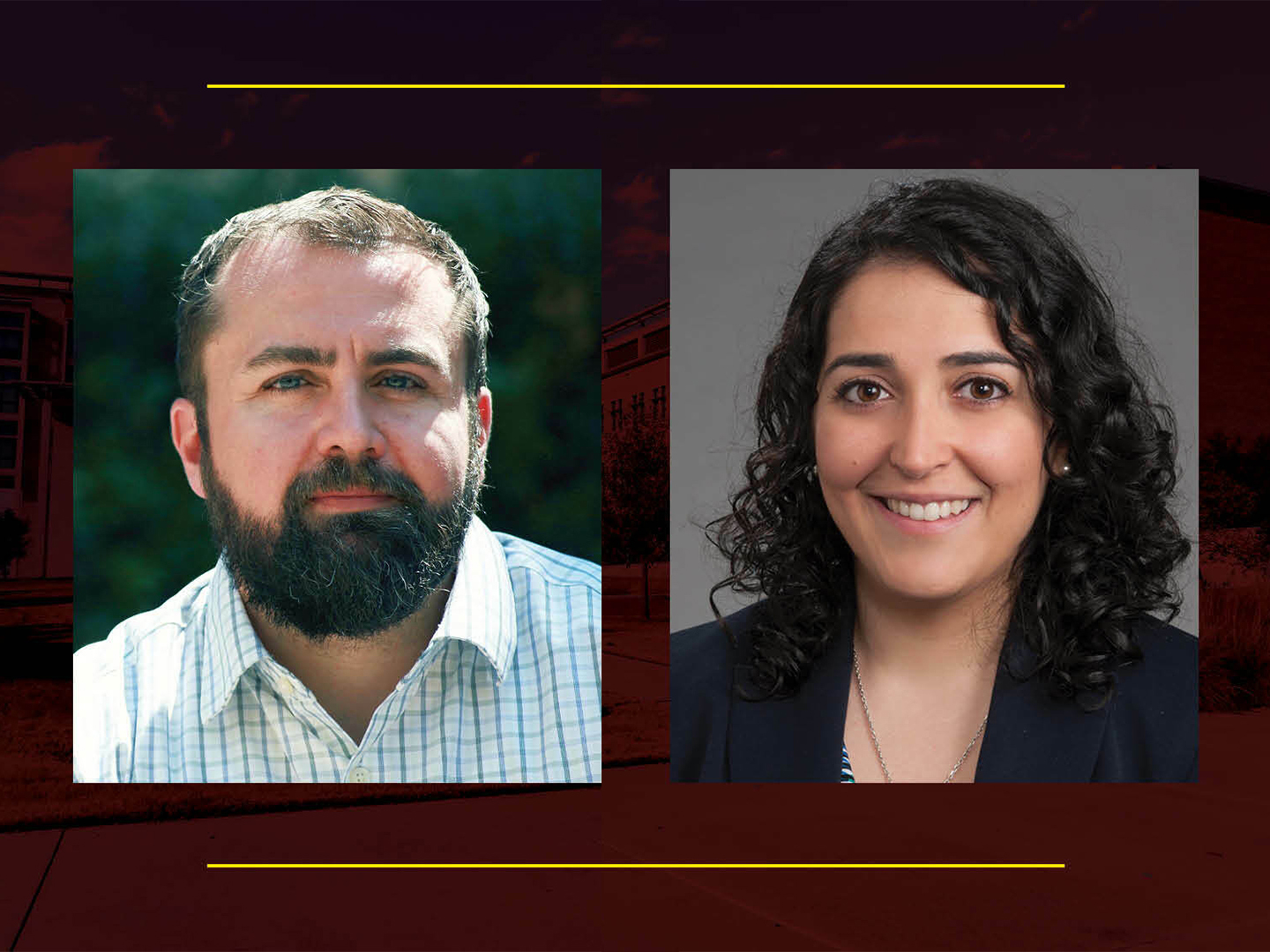News Stories
Texas A&M Center Receives $7.6 Million NIEHS Grant, Returns To Veterinary Medicine & Biomedical Sciences
The Texas A&M Center for Environmental Health (TiCER), a National Institute of Environmental Health Sciences (NIEHS) Environmental Health Sciences Core Center, will be returning to the Texas A&M School of Veterinary Medicine & Biomedical Sciences (VMBS) with a $7.6 million grant for the center’s new funding cycle. Under the new leadership of Dr. Weston Porter, […]
Texas A&M Graduate Student Receives Grant For Metastatic Breast Cancer Research
Hannah Carter, a graduate student at the Texas A&M School of Veterinary Medicine & Biomedical Sciences (VMBS), has received an $80,000 research grant from the Susan G. Komen Foundation to study sirtuins, a type of protein known to reduce signs of aging that may also play a role in breast cancer metastasis — the point […]
Texas A&M Faculty Member Receives Career Achievement Award Honoring Work In Veterinary Advancements For Dogs
Dr. Jan Suchodolski, a professor at the Texas A&M College of Veterinary Medicine & Biomedical Sciences (VMBS), is the 2024 recipient of the American Veterinary Medical Association (AVMA) Career Achievement in Canine Research Award. The award recognizes AVMA members who’ve made long-term contributions to research that advances dog health. Suchodolski, who also serves as associate […]
UTMB, Texas A&M Awarded $7.5M Grant To Establish Translational Center For Women’s Health Research
The University of Texas Medical Branch and Texas A&M University have received a $7.5 million grant from the National Center for Advancing Translational Sciences (NCATS) to establish a center dedicated to promoting women’s and pregnancy health research. The UTMB-Texas A&M partnership is one of four centers funded by NCATS and the only center that will […]
The Texas A&M University System Selects Architect, Construction Manager For Clinical Veterinary Teaching & Research Complex
The Texas A&M School of Veterinary Medicine & Biomedical Sciences (VMBS) has reached an important new milestone in its plan to build a new Clinical Veterinary Teaching & Research Complex (CVTRC), partnering with Page, a full-service architecture, engineering, and design firm, and Texas-owned Vaughn Construction to design and build its new facility. “We are delighted […]
Heseltine Combines Love For Veterinary Medicine, Drive To Help Students Succeed
The things we display in our personal spaces tell the story of who we are. A photo shares what we hold dear, an award points out a strength, and a knickknack highlights an interest. The office of Dr. Johanna Heseltine, a clinical associate professor in the Texas A&M School of Veterinary Medicine & Biomedical Sciences’ […]
Texas A&M Veterinary Medical Teaching Hospital Receives Emergency Care Facility Certification
The Texas A&M Veterinary Medical Teaching Hospital (VMTH) has once again earned level two facility recertification by the Veterinary Emergency and Critical Care Society (VECCS). VECCS certification is a measure of how well a veterinary care facility is able to treat small animal patients in emergencies, including the medications available, the number and full-time status […]
College of Veterinary Medicine and Biomedical Sciences, Biomedical Engineering Welcome Joint Faculty
In a collaborative effort, the Texas A&M College of Veterinary Medicine and Biomedical Sciences and the Department of Biomedical Engineering at Texas A&M University have welcomed Dr. Kenneth Hoyt and Dr. Elaheh Rahbar ’11 to their faculty cohort. Strengthening the partnership between the two groups is a pillar in biomedical engineering’s strategic plan and is […]
Texas A&M GI Lab Research Unraveling Medical Mysteries, Ensuring Animal Health
Gastrointestinal disorders are some of the most common health problems facing pets today. In fact, more than 10% of all new visits to a veterinarian are related to GI disease in both dogs and cats, according to Dr. Jörg Steiner, a Universrity Distinguished Professor at the Texas A&M School of Veterinary Medicine & Biomedical Sciences […]
Teller Reflects On AVMA Presidency, Its Impact On Her Future At Texas A&M
Dr. Lori Teller is not one to be idle. The clinical professor at the Texas A&M School of Veterinary Medicine & Biomedical Sciences (VMBS) already has a busy workload leading the school’s Virtual Vet telemedicine program, treating patients in the Small Animal Teaching Hospital’s Primary Care Service, and teaching Doctor of Veterinary Medicine students at […]












